The Crucial MX300 750GB SSD Review: Micron's 3D NAND Arrives
by Billy Tallis on June 14, 2016 9:00 AM ESTAnandTech Storage Bench - The Destroyer
The Destroyer is an extremely long test replicating the access patterns of very IO-intensive desktop usage. A detailed breakdown can be found in this article. Like real-world usage and unlike our Iometer tests, the drives do get the occasional break that allows for some background garbage collection and flushing caches, but those idle times are limited to 25ms so that it doesn't take all week to run the test.
We quantify performance on this test by reporting the drive's average data throughput, a few data points about its latency, and the total energy used by the drive over the course of the test.
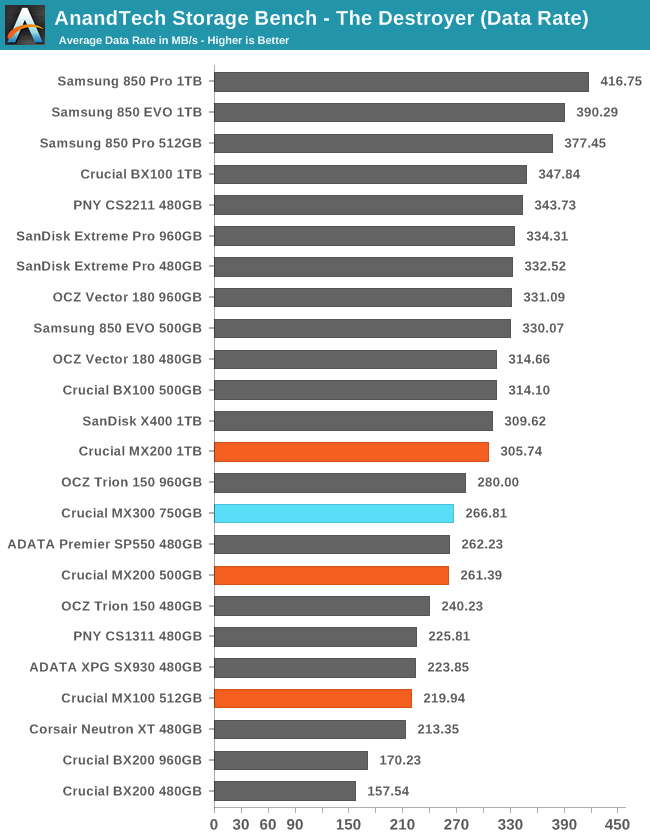
The average data rate for the MX300 is between the scores of the 1TB and 500GB MX200 but a little closer to the latter. This is acceptable performance but not really an upgrade over the MX200.
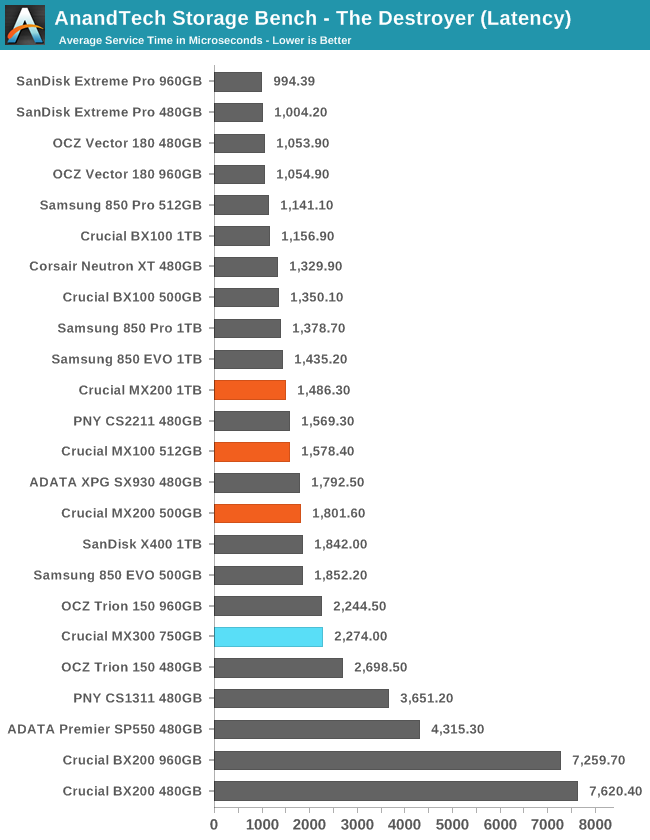
The average service time of the MX300 is slow enough to put it among the budget planar TLC drives and well behind the SanDisk X400.
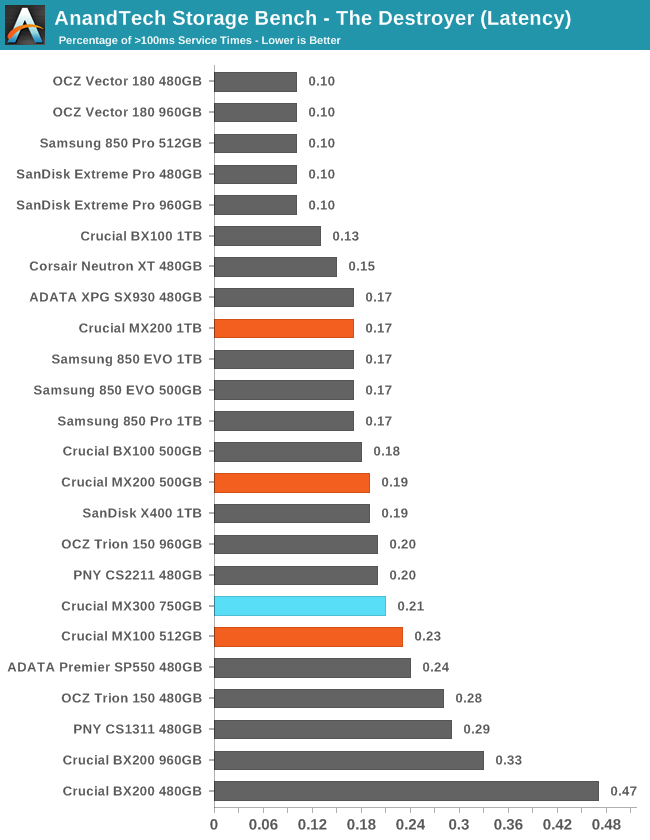
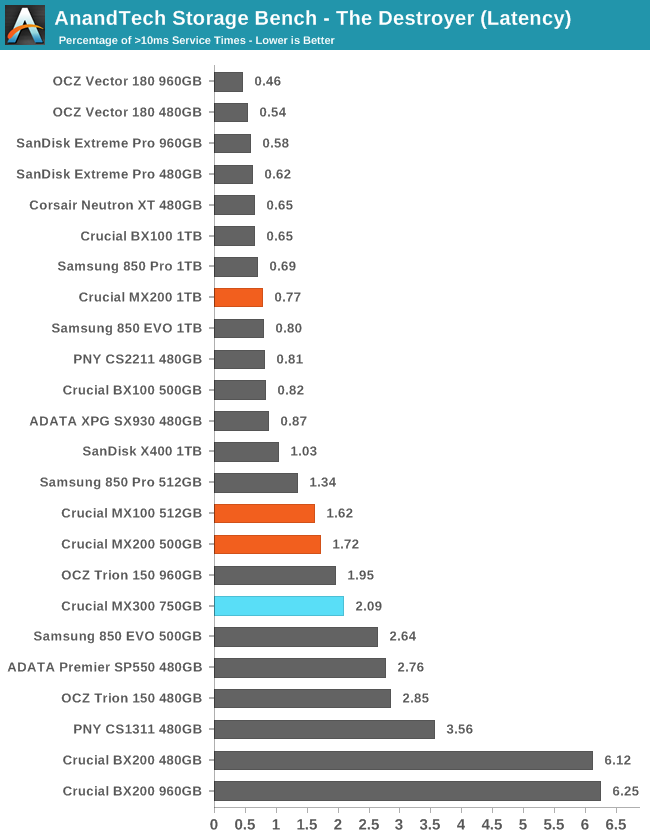
The MX300 has a higher frequency of both moderate and severe latency outliers than the MX200, but it isn't a huge discrepancy. The performance relative to the SanDisk X400 shows that there is room for improvement.
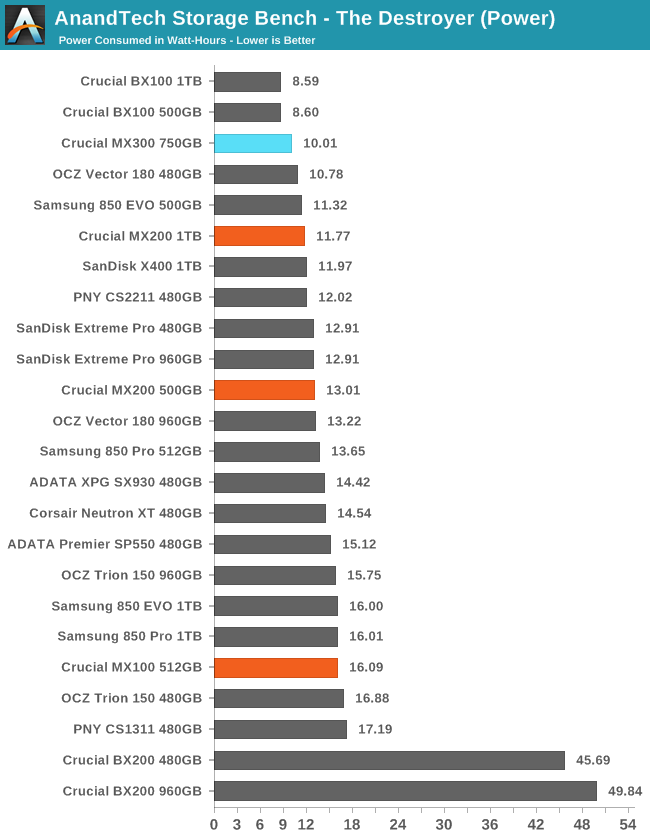
The MX300's power consumption comes in a distant second place behind the BX100, but this is still remarkable efficiency for a TLC drive.










85 Comments
View All Comments
fanofanand - Tuesday, June 14, 2016 - link
Slower and more expensive than the competition. Bravo Micron/Intel! Bravo!ddriver - Tuesday, June 14, 2016 - link
They have no choice but to get realistic about the price.TheinsanegamerN - Tuesday, June 14, 2016 - link
Other SSD manufacturers are living in la-la land then? Because other OEMS seem to have no trouble selling SSDs for less.Arnulf - Tuesday, June 14, 2016 - link
They should get realistic about their naming as well - this is clearly a BX300 ... Or perhaps a BX298.32, given more crappy performance considering the BX100 ...Oxford Guy - Friday, July 8, 2016 - link
The drive beats the 850 EVO in the power consumption (except idle) tests, though. So, if the drive is going to be used in a laptop that doesn't idle much it could be a potential choice over the Samsung based on that.barleyguy - Tuesday, June 14, 2016 - link
I was hoping it would be faster than the MX200. I have 3 of those.It's top of the charts in power efficiency though, so it might be a great choice for a laptop. The performance difference is probably barely noticeable in real world use, but the battery life advantage might be tangible.
Also, launch price is $199 for 750 GB, which is not bad at all.
chrisso - Friday, June 17, 2016 - link
I also use an MX 200,which actually only has a write speed of 330.I suspect launch price is a suits guestimate at selling point.
Real world differences are indeed minimal, price will be the main selling point later for the mainstream crowd (me).
chrisso - Friday, June 17, 2016 - link
(my drive IS the humble 256 gig, btw). I would buy a 750 later as pointed out,prices are a tumbling.eek2121 - Tuesday, June 14, 2016 - link
Prices quoted are MSRP, as an example, the Trion 150 listed above debuted at 38.5 cents per gb. Don't be surprised to see this drive drop below 20 cents a gig in a few months.Gondalf - Wednesday, June 15, 2016 - link
Strange comment. Anandtech article is not negative at all about this SSD driver, Techreport too says "recommended" at the end of the review.So you are a little biased in my opinion.